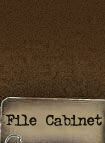
Case Title: Booby trapped
Outhouse
Subject: Public toilet in
park explodes after US
paratrooper pulls plunger
Date: September 18th, 1944
Location: Eindhoven,
Holland
Introduction: Page 161 of
Mark Bando's book "Vanguard of
the Crusade" reads: "Members
of H/506th entered a park within
Eindhoven and encountered an
outhouse. Luther Myers entered
for some privacy, but the
Germans had booby-trapped the
toilet. When Myers pulled the
handle to flush the toilet, the
outhouse exploded, miraculously
leaving him seated on the
throne, unharmed. DiCarlo
recalled seeing him holding the
handle with his pants around his
ankles, surrounded by smoke."
Investigation
This remarkable story was reason
for Battledetective.com to start
an investigation. What struck us
as odd was the fact that
apparently a public toilet
facility was prepared with an
explosive device that would set
off when the plunger was pulled.
The motive for such an act is
clear: to hurt the user of the
outhouse. The question is who
would do such a thing?
Suspects
Three possible categories of
'suspects' can be distinguished:
German soldiers, Dutch
Resistance workers and US
troops. Although each of these
categories had access to
explosives, they all lacked a
clear motive.
US Troops
The Americans even lacked the
opportunity. Myers and DiCarlo
are said to have entered a park
and, at the sight of the
outhouse Myers decided to make
use of it. Then the toilet
allegedly blew up. We think it
is safe to assume that the
toilet was already booby-trapped
before the first Americans
entered the park.
German Soldiers
In the story it is suggested
that the Germans had
booby-trapped the toilet. The
German garrison in Eindhoven did
do a lot of sabotage in the days
prior to Operation Market
Garden, but only to their own
installations. They blew up most
of their structures and depots
at the Welschap air base and the
Eindhoven rail road station just
before the 17th of September
airborne landings. In the
Eindhoven Regional Archive we
have found a Fire Report (Report
# 143) of the Eindhoven Fire
Department dating September 17th
1944. Fire trucks rushed to a
fire on Dommel Street. The
Germans had set fire to their
Reichs Post Office. Members of
the Sichterheits Dienst (SD, or
Security Forces) ordered the
firemen to let it burn. They
were allowed to hose adjacent
premises down with water,
though. This is an indication
that the Germans' destructive
behavior was not covert, as the
installation of a booby-trap
usually is. Moreover, the
Germans were not aware of the
exact date of the start of an
Allied offensive. Therefore it
was unknown to them when their
garrison in Eindhoven might come
to an end. If the Germans would
have booby-trapped an outhouse
in a public park, they would
have created a dangerous
situation that could hit any
random user of the outhouse.
This could very well hurt or
kill their own comrades.
Dutch Resistance Workers
If the organized Dutch
resistance had a motive to
booby-trap the outhouse at all,
it would be to target Germans.
For this category of 'suspects'
the random chance of hurting
Dutch citizens or comrades in
the resistance is equally valid.
Effectiveness of the
explosive device
Furthermore, the explosion did
not even hurt Meyer. It is
therefore questionable if
someone indeed tampered with the
toilet with the intention to
hurt the user. It may also
indicate that the outhouse was
of a rather flimsy construction.
Victimology
The Pulles Rosters list Myers
and DiCarlo as follows: Corporal
Luther H. Myers; wounded in
Bastogne on January 14th 1945
and Private 1st Class Mario
"Hank" DiCarlo; wounded in
Normandy and Bastogne. Both were
in "H" Co./506th. The 506th was
in Eindhoven on the 18th, 19th
and some time on the 20th of
September 1944.
Location of the park
The account does not tell in
which park this incident would
have occurred. There are several
parks in Eindhoven. To determine
which one would be the most
likely, we have analyzed
photographic evidence which
shows the deployment of
paratroopers of 3rd Battalion on
the 18th of September. The most
likely parks for them to be in
would be the City Park on
Alberdingk Thijm Laan or the
park along Eden Street; named
the Anne Frank Plantsoen after
the war. We have also tried to
locate photographs of Eindhoven
parks with outhouses.
So far, on the website of
The Old Home Town (Eindhoven in
Beeld) we've found this
picture of public restrooms in
the city park of Eindhoven
(click on the image for a larger
picture):
(click to
enlarge):

This photograph, of a band named
The Jerseys from Eindhoven, was
taken in 1968 and the restrooms
are no longer there. It may have
been the toilet facility
referred to in this case.
Emergency Services Records
Although the destruction of a
public toilet may seem trivial
in the turmoil of events on that
18th of September 1944, there is
a possibility that the incident
found its way into the records
of the Eindhoven Police
Department, Fire Department, Air
Protection Organization or any
other City Departments.
Police Department Records
The Eindhoven regional archive
does contain various collections
of documents from the Municipal
Police Department and the later
Regional Police Department, with
Eindhoven as a district. None of
these collections, however, have
incident reports on file from
the May 1940 to September 1944
era. The oldest collection of
Monthly Summaries of police day
reports dates back to 1945. We
have consulted our source with
the Eindhoven Police who is now
retired from the department. He
shares a mutual interest in the
actions of the 101st Airborne
Division in World War Two and
hosts a
website which in general,
describes the visits of veterans
of "E"-Co./506th to post-war
European battlefields. He could
tell us that what was left of
the department's historical
records was handed to the
regional archive in 1994; the
year of the so called
regionalization of the police.
He had also been looking for
information about the Eindhoven
police in World War Two, but had
found nothing. Further, Battle
Detective Tom's grandfather,
Chief Inspector Matla, wrote a
book at the occasion of his 25th
year with the Eindhoven police,
describing the period between
the late 1920's to the end of
World war Two. Unfortunately,
there is hardly any reference to
the period of the German
occupation of the city.
Fire Department Records
Fire Reports
The regional archive owns a very
detailed collection of Fire
Reports from the Fire
Department. We obtained all
reports for the month of
September 1944. These reports
show a very interesting sequence
of events such as the
destruction of the Reichs Post
Office, mentioned earlier, and
the sabotage of a power station
by German soldiers on the 17th.
There are reports of the 18th of
fires in barns and stables in
the Northern suburbs of
Eindhoven, which could not be
reached by the fire engines,
because they were in the combat
zone of the advancing
paratroopers. There is only one
Fire Report for the 19th of
September 1944. This report,
however, refers to the
individual reports made by each
engine chief of the fires caused
by the Luftwaffe bombing raid on
the night of the 19th. There is
no report of the toilet incident
in this case file.
Watch Commander's Log
We have also obtained a copy of
the Fire Department watch
commander's log book of the 18th
and the 19th of September. In it
are the entries of all the fires
that have been registered in the
Fire Reports and also the
dispatches of every fire truck
and other logistical details. An
example of the latter is the
report of decreased water
pressure in the city on the
18th. In light of this
investigation, however, there is
no reference to an exploding
toilet in any Eindhoven public
park or recreational area.
Eindhoven Air Protection
Organization Records
Battledetective.com also
obtained the report by the
city's Air Protection
Organization of the events on
the 19th of September 1944, when
the city was bombed by German
fighter-bombers, killing
approximately 200. The regional
archive had no records by this
organization of incidents
occurring on the 18th of
September on file, though.
Department of City
Development & Maintenance
After the war had ended in
Holland, all damage caused by
combat, artillery and bombing
raids had to be repaired. Before
the liberation and the
subsequent bombing of the city,
Eindhoven had lived through
several raids by the Royal Air
Force, mostly on installations
of the Philips Electrical
Company. Many cities and towns
in Holland were hit much harder
than Eindhoven. In May 1940 the
Germans bombed the entire
downtown area of the port city
of Rotterdam and threatened to
bomb other major cities. This
terror bombing forced the Dutch
military into submission. After
Operation Market Garden Allied
troops had to fight hard for
every yard of Dutch soil. It
took until the late 1950's to
repair or replace all the
damaged houses, buildings and
infrastructure. The city of
Eindhoven has on file all repair
bills and financial allowances
and restitutions from the Dutch
national Ministry of
Redevelopment and People's
Housing of damage done in World
War Two.
Among these bills and
restitutions we have not found a
single entry of an exploded or
otherwise damaged public toilet
facility. We did find damage
reports and restitutions for the
landscaping and fences in parks.
These were mostly damaged after
the liberation of Eindhoven by
British troops stationed in the
city. We also found a notice of
restitution for damage to a cafe
in the City Park caused by the
bombing raid on the 19th of
September 1944:

The only structure that has a
remote connection to Myers'
booby-trapped toilet is
mentioned in a restitution
notice for a urinal. This urinal
however, was damaged by "acts of
war on the 19th of September
1944" and was located on the
municipal parking lot behind the
Hotel Royal.
This hotel was the location of
the German Ortskommandantur
during the occupation.
(click on the
images to enlarge)
Hypotheses: Two Scenarios
Battledetective.com has
developed two working hypotheses
taking into account the fact
that it is very unlikely that a
public restroom would have been
booby-trapped in an Eindhoven
park on the 18th or the 19th of
September 1944. Another fact is
that paratroopers in those days
literally festooned themselves
with hand grenades. Myers may
have unbuttoned his M43 uniform
trousers and taken off his web
gear before relieving himself
and, while doing so,
incidentally removed the safety
pin of a hand grenade. The
grenade may have fallen into the
crapper and exploded. Myers may
have come up with the booby-trap
story to save himself the
embarrassment of his fellow
troopers finding out about this
clumsiness.
Another scenario may be that
Myers, a young paratrooper and
despite being in the lead
battalion that entered
Eindhoven, felt that he had not
seen enough action yet. As a
joke he may have pulled the pin
from one of his grenades and
thrown it into the crapper in
lieu of flushing it. Immediately
after this immature but
dangerous stunt he may have
considered the possible
consequences; being chewed out
by his first sergeant for
wasting US taxpayers money to
destroy Dutch property. That may
have been the moment he came up
with the story of a booby-trap.
CONCLUSION
Considering the available
evidence, or rather the lack of
it, combined with the lack of a
motive to install an explosive
device in a public toilet, we
consider this story unlikely to
have happened as described in
the introduction. Until
convincing evidence of the
contrary can be produced, it
will remain an exaggerated war
story to us.
|













